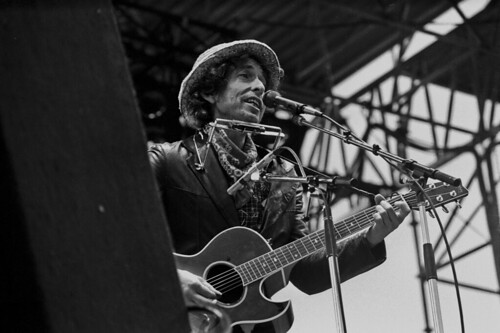While the history of folk music can be traced back almost 1,000 years, the emergence of the genre as a modern type of popular music did not happen until the end of the 19th century. This is because, before the era of recording, music sung by groups of people at work or at home would be classed as folk, although other genres would emerge from various cultures, such as how jazz did from slaves in the southern United States.

Founding Fathers of Folk
A chance meeting on Boxing Day 1899 by Cecil Sharp and the Headington Quarry Morris Men, who were trying to make some extra money over the festive period by playing concertina and dancing together, represents the birth of modern folk music.
Throughout the early part of the 20th century, folk music would remain under the radar, although acts such as Jimmie Rodgers and the Carters and The Lomaxes would be popular at this time, they were classed more as traditional country artists, despite their sound being very close to what we would call folk today.
Folk Revival
Folk would remain a peripheral genre in the music industry until after World War 2, when a folk revival in the United States and the United Kingdom saw it become hugely popular. The categorisation of some of the biggest artists of the mid to late 20th century certainly helped this to happen, with Bob Dylan and Donovan being widely credited as contemporary folk artists, due to their ability to blend traditional folk music with popular trends of the time including rock and roll and jazz.
The Identity of Folk Music
Around the world, folk music has its own identity in different countries. Although most in the western world would associate with commercial folk music, in places like Eastern Europe, South America, and across some Asian countries traditional folk is still hugely popular. Former Soviet states, including Armenia, Georgia, and Kazakhstan, are famous for their folk musicians that can be found playing on the street, while family members playing their own instruments are more likely to be seen at gatherings than a copy of the latest Rihanna CD.
Much like when Sharp first discovered what he termed to be traditional folk music, today it is often combined with dancing, either synchronized or freestyle, also in a way associated with the culture it comes from.
The best way to define folk music today is as music that comes from one place. From the concertina and accordion in Europe to pan pipes in South America, everywhere has their own brand of folk music that can be traced back hundreds of years, with contemporary and commercial folk carving out its own unique genre.
Image Author: Heinrich Klaffs
Are you a guitarist? Check out our full range of online guitar lessonsAre you a saxophonist? Check out our full range of online saxophone lessons
Subscribe to Pro Music Tutor from as little as £7.99 per month
Related Posts
-
Is Music Theory Important to Modern Musicians?
The importance of music theory is a hot debate topic in the world of professional music. Some believe knowledge of music theory is what makes you a true musician, whereas some feel their lack of music theory knowledge is like a badge of honour. With the eternal debate over the importance of music theory raging […]
View All >> -
5 Ways Spanish Music Influenced the World
Contemporary popular music has transcended all national boundaries, with different types of music being performed and listened to in all corners of the world. Each culture also adds their own little tweaks and twists to the music, constantly creating new sounds and influences. Spanish music has deeply influenced the popular music we listen to today. […]
View All >>
Latest Blog Entries
-
The Benefits of Online Music Education
Learning music has never been easier, since the internet and modern technological advancements have opened the doors to countless possibilities, expanding the subjects people can choose from and how the lessons are taught. Now, people can study a whole host of music-related topics; from learning to play guitar or DJing, to understanding the inner workings […]
View All >> -
Essential Jazz Guitar Scales that are Easy to Learn
Improvising in jazz requires the ability to play in different keys over different chords. Results certainly do not come overnight, but with diligent practice, you would be surprised by what you can achieve. Many people ask me about what scales I use as if they were some big secret. While knowing your scales is very […]
View All >>
Blog Categories
- Categories
- Guitar Tips (93)
- History (36)
- How-To (38)
- Interviews (3)
- Music Industry (121)
- Prolinks Guitar (2)
- Prolinks Lessons (3)
- Prolinks Tutor's Profile (1)
- Saxophone Tips (40)
- Uncategorized (6)
Tags
Archive
- November 2018 (1)
- February 2018 (1)
- December 2017 (1)
- November 2017 (1)
- October 2017 (1)
- July 2017 (4)
- May 2017 (2)
- April 2017 (1)
- August 2016 (2)
- July 2016 (1)
- June 2016 (2)
- May 2016 (3)

